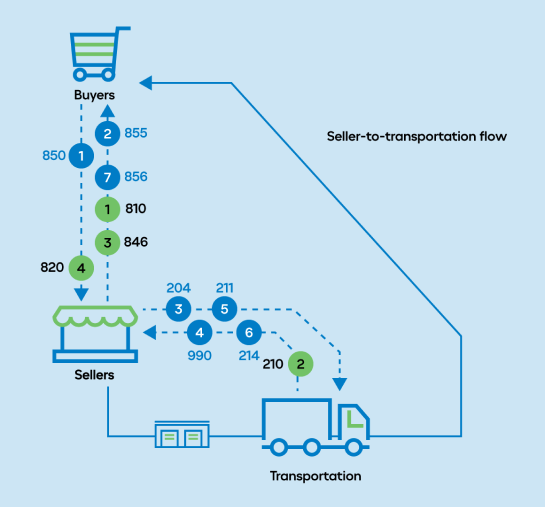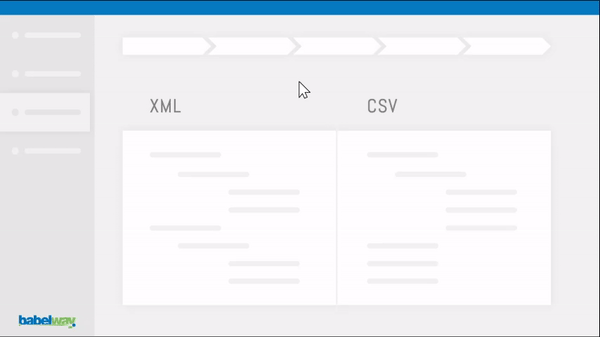Logistics EDI
Transportation
The first step to getting started in EDI is figuring out the best solution to use. Carriers can administer EDI through:
- a managed service
- custom development
- on-premise software
- or software as a service (SaaS)
When you’re trying to figure out a solution for EDI, getting a stellar recommendation from a colleague in the transportation industry is fantastic. But be aware: You might actually need a little bit more data before you pull the trigger. Have you thought about which EDI management model is the best fit for your company? We’ll highlight and then review the positives and negatives of all four.
EDI can be a real bear to manage, especially if you’ve chosen a solution that doesn’t play to your company’s strengths. These distinct EDI management models can be broken out into two categories: Managed service (external) and Self service (internal)
Managed service model
In a managed service model, you contract with a third party to handle your company’s EDI. It works well for carriers that don’t have the expertise or the headcount required for the self-service models.
On the downside, transportation companies that do EDI as a managed service lose autonomy, which might make it harder to get work done on their timeline or to resolve technical problems that arise with trading partners. This option also tends to be the costliest of the four models.
Custom development
The first EDI self-service model is custom development. Building your own EDI solution often starts out as a great idea when your company has development capacity. After all, using in-house programmers is a soft cost.
What trips most carriers up is the amount of maintenance and ongoing dev time required by home-grown EDI solutions. Custom development may look straightforward when you’re dealing with one partner and a few connections, but scaling is a real problem.
On-premise software
The next self-service model, on-premise software, has traditionally been used by transportation companies for decades. By bringing on or contracting with highly specialized EDI experts, carriers could build and manage their connections with local installations of EDI software.
Although the acquisition costs for many installed EDI products are lower today, ownership costs could still be relatively high. Usability, for example, is a big deal when you have to train new employees on dense, technical software.
SaaS
Software as a Service or SaaS, the last self-service model, takes EDI software to the cloud where maintenance and updates are done by the EDI provider. EDI products using a SaaS model can be accessed on the web… from anywhere.
SaaS is generally easier to use and narrower in focus than on-premise solutions. For example, most SaaS EDI products won’t come embedded as a module to your transportation management system. Critics of the SaaS model often prefer owning the rights to EDI software over renting it — so to speak — through a recurring monthly fee.
Want to start your next EDI project? Preview our demo to see how Babelway will aid you
Uncommon control
Babelway is a SaaS platform designed for users (not programmers).
It gives 3PLs powerful tools to take control of transportation.
- Visual field mapping
Cut EDI on-boarding time in half with point-and-click, drag-and-drop building tools - Validation rules manager Avoid unnecessary errors by customizing business rules to meet your requirements
- Connection tester Validate partner connections in minutes before pushing them live
- Real time alerts Know immediately when message errors occur and how to fix them
Most common EDI Transaction Codes in Transportation
Before goods are delivered
After goods are delivered

What have our clients said about Babelway?
No hiring an expert. No opting for managed services. Carroll’s Logistics chose Babelway’s self-service platform. The company wanted a responsive way to engage a customer with a massive, new contract. In fact, Caroll’s met the customer’s need at the right time. And as a result, the IT team has new EDI skills they can apply elsewhere to grow the business.

